When you think of places associated with high-tech, you likely think of Silicon Valley, Japan or maybe Korea. If you subscribe to national stereotypes then let’s be honest here, you probably don’t think of Australia as being a hotbed of technological innovation. Yet thirty years ago the land of searing desert heat, koalas, kangaroos and really blokey blokes guzzling Fosters introduced to the world an electronic musical instrument that would change music and the music industry forever.
In 1979 the Fairlight Computer Musical Instrument (CMI) became the first commercially available digital sampler i.e. you could play back any sound on its keyboard that you had digitally recorded. The only instrument that had been remotely like it before was the Mellotron, which was essentially an analogue sampler that had a tape player behind every key on the keyboard. Nowadays the ubiquity of digital technology means that we take the ability to play back a digitally recorded sound at any pitch for granted, but back at the end of the seventies it was A Big Deal.
How big a deal? Well, big enough that throughout the 1980s musicians and producers were prepared to pay would-get-you-a-nice-property sized amounts of money to get their hands on a Fairlight. 1979’s Fairlight CMI Series I cost about $20,000 and the first sale went to Stevie Wonder. Kate Bush and Peter Gabriel were other early Fairlight customers and Gabriel liked it so much that he set up Syco Systems in the U.K. with his cousin and became Fairlight’s European importer and distributor.
The fact that so many musicians and successful producers such as Trevor Horn were scrabbling to explore the creative possibilities opened up by the CMI’s sampling facilities is somewhat ironic, for the Fairlight’s inventors had added digital sampling to their machine almost as an afterthought in their quest to create a more realistic digital synthesizer.
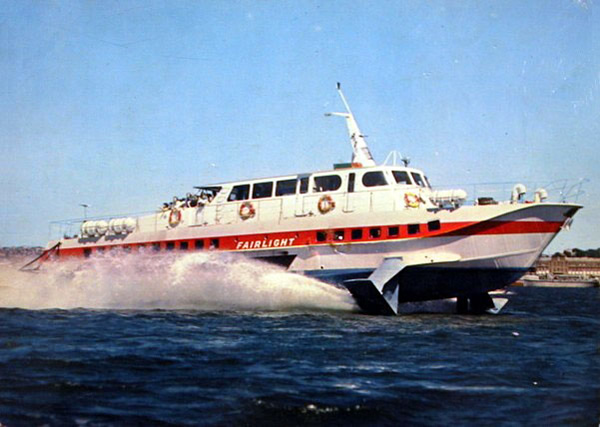
Kim Ryrie and Peter Vogel founded Fairlight Instruments Pty Ltd. in December 1975, naming the company after a hydrofoil that ran in front of Ryrie’s grandmother’s house in Sydney. Ryrie was seriously into synthesizers, but was frustrated by the limitations of the analogue machines of the time. He wanted to exploit the nascent technology of microprocessors to produce something better. Remember that the Intel 4004 had become the first commercially available microprocessor only four years earlier in 1971.
After about a year, Ryrie and electronics nerd Vogel met Motorola consulting engineer Tony Furse, whose company had produced a fully digital synthesizer named the Qasar M8 that featured dual Motorola 6800 processors running at 1 MHz. An impressed Ryrie and Vogel bought a licence for the machine and set about improving it. Their aim was to create a synthesizer capable of accurate and player-controllable digital simulation of acoustic instruments, something only recently realised with the advent of physical modelling synthesizers.
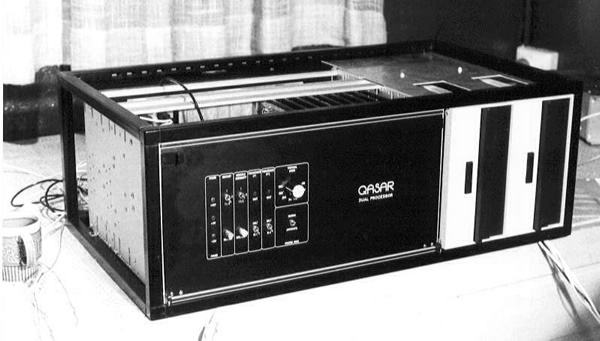
Fairlight “M8” photo credit: Peter Vogel.
Unfortunately the Qasar was bulky and didn’t actually sound very good. Ryrie and Vogel reduced the size and replaced the circuitry with printed circuit boards and spent the next few years improving the M8. In order to get more realistic sounds with more complex waveforms, they had the idea of digitally recording natural sounds, leading to the birth of digital sampling.
A sampling function was added to the Fairlight Qasar in 1978. Interestingly, Ryrie and Vogel themselves initially failed to spot the creative possibilities afforded by sampling and “regarded using recorded real-life sounds as a compromise—as cheating—and we didn’t feel particularly proud of it.” (Kim Ryrie – Audio Media magazine, January 1996).
The culmination of all their hard work was released in 1979 as the Fairlight CMI Series I. It had a 73 note keyboard, eight voice polyphony—i.e. it could play eight different sounds at once—supplied by eight discrete hardware audio cards and had a mere 16 KB available for storing waveforms. The system unit included two 8-bit Motorola 6800 processors and two 8½ inch floppy disk drives. The lucky owner interacted with the beast via an alphanumeric keyboard, a green-screen monitor and a lightpen. As well as being capable of crunchy, low quality snippets of 8-bit sampling, the original Fairlight could display waveforms graphically and also featured additive synthesis and a primitive sequencer. In other words, it was the world’s first complete music production workstation, as this wonderful video from 1980 demonstrates:
The Fairlight ran an operating system named QDOS, which was a variation of Motorola’s MDOS, not as the name suggests Tim Paterson’s Quick and Dirty Operating System which Microsoft licenced in 1980 to form the basis of future cash-cow MS-DOS. The Fairlight was operated in what was for the time a futuristic fashion by selecting commands on its monitor using the lightpen, although keyboard shortcuts could also be used. The basic functions of the system were organised around a set of user interface pages that were identified using a hexadecimal numbering scheme. For example, Page 1 was the Index page, Page 2 was Disk Control, Page 8 was Sound Sampling and Page D was Waveform Display.
One of the CMI’s party tricks was to be found on Page 6 which was named Waveform Drawing. This page enabled a sound’s waveform to be edited or drawn from scratch by using the lightpen. Because waveforms were split into a number of segments, to save time you could draw the shape of the first segment and the last segment and the Fairlight would interpolate the segments required to get from one to another.
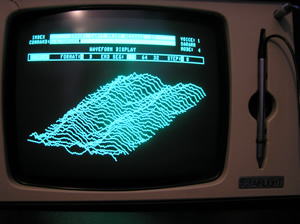
Fairlight Page D photo credit: Waveterm.
Although technically impressive, this feature was of limited practical use if you wanted to create an entirely new sound from scratch, as it’s actually rather difficult to draw something that sounds good. Most attempts ended up as rather industrial and harsh-sounding. In keeping with the original aim of providing digital recreations of real instruments, the early Fairlight sound library that came with the machine on a floppy disk was a set of samples of acoustic instruments.
Although an expensive and exclusive machine, the Fairlight soon found plently of customers amongst the pop and rock stars of the day. Jean-Michel Jarre, Thomas Dolby, Mike Oldfield, Rick Wright, Joni Mitchell, Herbie Hancock, Alan Parsons, Stewart Copland and Jan Hammer were all Fairlight owners. The Musician’s Union were less impressed, and incredibly tried to ban the use of the Fairlight because they were worried that it would mean that their members would soon be out of work!
By 1982 the improved CMI Series II had gone on sale. The sampling was still 8-bit, but the sampling rate had increased from 24 to 32 KHz. The Series II also featured an improved sequencer which could be found on Page R. The Series I had included a cumbersome feature dubbed Music Composition Language that made songwriting feel like computer programming. Disatisfied with this, an enterprising Fairlight customer took up Motorola 6800 assembly language programming and created a better alternative and in the process was hired by Fairlight. Page R presented a much more intuitive graphical display, which enabled the notes for each of the eight tracks to be arranged in a set of patterns.
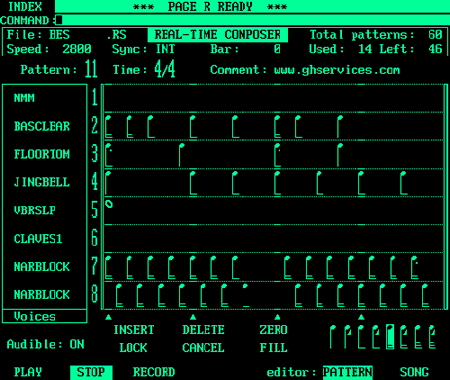
Fairlight Page R graphic credit: GH Services.
The impact of the now legendary Page R was probably as significant as the advent of sampling itself. It was the musical equivalent of WYSIWYG word processing and the forerunner of every graphical computer sequencing package that has come since. It also introduced the concept of quantization, which meant that the timing of notes could be tightened up so it no longer mattered if you weren’t a virtuoso keyboard player.
By the early eighties the sound of the Fairlight was all over the pop and rock charts and along with the Yamaha DX7 and probably the Roland D-50, the CMI went on to define the sound of the decade. Countless records including Afrika Bambaataa’s Planet Rock featured the ORCH5 orchestral hit sample and countless more were graced with ethereal breathy choirs or glass being broken, courtesy of the Fairlight.
Peter Gabriel’s Shock the Monkey from 1982 seems to be acknowledged as the first hit record to extensively feature a Fairlight. The Art of Noise wouldn’t have existed if it hadn’t have been for the Fairlight, whilst 1984’s number one smash Relax by Frankie Goes to Hollywood saw Trevor Horn somewhat controversially discard most of the band’s original recorded material, in favour of a sophisticated Fairlight production that spliced together multiple different versions of the track and cost £70,000 in studio time.
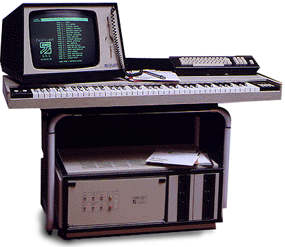
Development of the Fairlight hardware and software continued and in 1983 the Series IIx was released, featuring upgraded processors and support for the new MIDI standard. However, by this time the Fairlight was no longer the only game in town. Incredibly, an even more up-market system named the Synclavier II was being sold by New England Digital. The Synclavier of the time offered 16-bit digital audio recording (in mono) to hard disk—yours for about a cool $300,000!
At the slightly more affordable end of the spectrum, E-mu Systems released the Emulator sampling keyboard, which was an 8-bit sampler and basic sequencer package and which lacked most of the fancy features of the Fairlight. The Emulator sold for about $10,000 and as with the Fairlight, Stevie Wonder bagged the first production model.
Fairlight themselves were using their expert knowledge of digital signal processing to branch out into video as well as audio, launching their Computer Video Instrument (CVI) in 1984. The CVI enabled various video effects to be applied to the picture in real time, such as psychedelic colourization, stretching, zooming and painting over the top. You’ll probably recognise the effects from 1980’s television, when they were used so much that they’re now a cliché.
By 1985 the Antipodean wonder workstation was the first sampler to achieve greater than audio CD quality stereo sampling and polyphony increased to sixteen voices. The CMI Series III was 16-bit, had acquired a hard drive and weighed in at a hefty £50,000, give or take ten grand depending on options. The Series III ditched the old QDOS operating system in favour of a new system named OS 9—no relation to the MacOS of the same name. At the same time the lightpen was replaced by a graphics tablet, presumably because a lot of owners getting heavy usage out of their CMIs had developed aching arms by this point. Page R was replaced by a new sequencer named CAPS, which stood for Composer, Arranger, Performer, Sequencer.
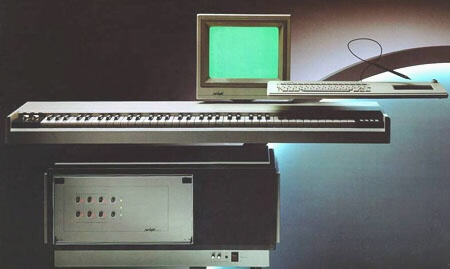
I think that I first became aware of the Fairlight whilst watching the Pet Shop Boys perform on Top of the Pops in the mid-1980s. They were at the zenith of their commercial success and Chris Lowe always looked the height of cool wearing sunglasses and a baseball cap whilst playing this white keyboard that was obviously very sophisticated by virtue of having a computer monitor and a lightpen! They even had the words PET SHOP BOYS scrolling across the screen. It sounds unbelievably naff now, but back then it was pretty heady stuff!
The Pet Shop Boys and many other artists made some brilliant records on the Fairlight during the 1980s and early 1990s and it was commonplace for record sleeves to credit the likes of Blue Weaver, Ian Curnow, Andy Richards and J.J. Jeczalik for Fairlight programming—which to me sounded like just about the best job in the world at the time.
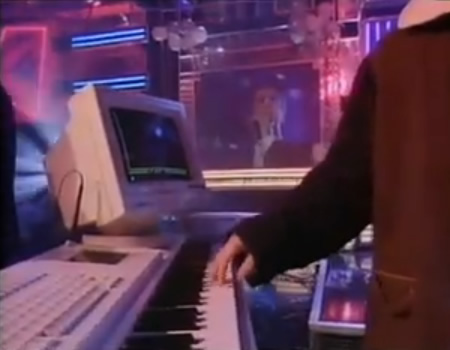
The Fairlight CMI empowered (admittedly wealthy) musicians to take control and do it all for themselves. It was the first step on the democratic journey that led to people making hit records in their bedrooms. Rightly or wrongly, many of the people in those bedrooms weren’t even “proper” musicians, just people with a bit of imagination and an ear for what sounded good.
By the end of the 1980s, Fairlight were facing tough competition from Japanese rivals such as Akai, who were selling rack-mounted samplers such as the S900/S950 for a fraction of the cost of a CMI. The availability of affordable digital samplers in the late eighties led directly to the explosion of dance music in all its forms during this period.
Akai’s 1988 vintage S1000 was extraordinarily successful and soon became a staple of both bedroom and professional recording studios around the world. Although lacking the Fairlight’s musician-friendly GUI and graphics tablet, the Akai samplers innovated in other areas. For example, the S1000 introduced the time-stretch feature which enabled a sample’s tempo to be changed without affecting its pitch. Soon people were sampling the drums from obscure 1960’s and 1970’s funk records and time-stretching them to twice or three times the original tempo to create entire new sub-genres of dance music such as Jungle. The great House records such as Beat Dis by Bomb the Bass, MARRS' Pump Up The Volume and House Arrest by Krush fell out of the democratization of music-making heralded by the advent of affordable samplers and synthesizers.
The creative possibilities afforded by sampling seemed endless. It was no longer just a convenient means of recreating a real instrument that you didn’t have to hand, or a way of incorporating interesting sound effects into a recording. Sampling was being used to lift entire pieces of music from other artist’s prior work. Sometimes the results were interesting, giving a new twist to something familiar, but other times the end product was just plain lazy. Regardless, the music business was horrified and a whole new industry of legal departments devoted to the issues of obtaining, granting or denying sample clearance sprang up.
Music’s gain was Fairlight’s loss, as they suffered the same fate as many other companies selling expensive computer-based products. The relentless march of technological progress combined with falling costs to the consumer, plus the fact that pretty much everyone in the market for a Fairlight already had one, led to the company going bust at the end of 1988. In a sad end for a pioneering company, the existing stocks of Fairlight hardware were auctioned off for a song in early 1989. Happily, the Fairlight story didn’t end there, although it did get somewhat more complicated.
Kim Ryrie found new financial backing and created a new company named Fairlight ESP (Electric Sound and Picture) in April 1989, producing products targetting the high-end audio post production market employed by television and film studios. Following financial difficulties, this company restructured as Fairlight.au in 2003.
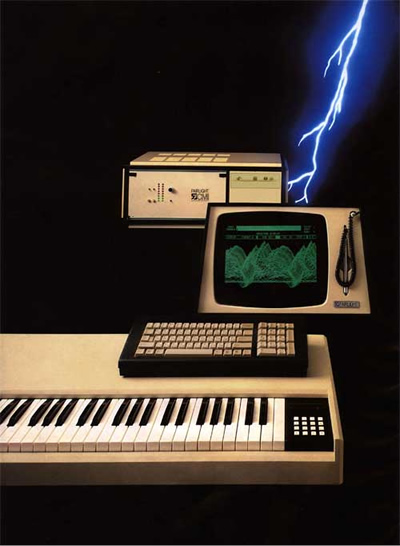
In August this year, Peter Vogel founded a new company named Fairlight Instruments with the aim of once again developing musical instruments that use the latest audio technology. Their first product is the retro-looking CMI 30A (30th anniversary edition) that utilises the Crystal Core media processor developed over a number of years by Fairlight.au. The Fairlight 30A will use this virtual hardware to faithfully reproduce the unique sound of the original CMI and many aspects of its operation will be switchable between Series I, II, III or contemporary audio standards in what effectively amounts to a Fairlight hardware and software greatest hits package. There’s even a rumour of a Fairlight Series IV to follow.
By the time Microsoft’s Windows 95 operating system was launched to great fanfare, the average multimedia PC included a soundcard that on paper at least matched or exceeded the sound processing capabilities of a Fairlight Series III. The capabilities, yes, but not the sound. The Fairlight’s technical limitations are what make the sound distinctive and sought-after, even today. Rather than offering a perfect digital reproduction, the Fairlight’s hand assembled bespoke audio hardware adds its own unique and desirable colour to a sound, making it just as distinctive in its own way as the sound of a Fender Stratocaster guitar, a Hammond organ, or any other classic musical instrument. The great thing about old electronic musical instruments is that the technology may be long obsolete, but it doesn’t matter because people still want that sound. It may no longer be dominant in creating the soundtrack to our lives, but the wonderful Fairlight CMI’s place in popular music history and legend is assured.
The following sites were invaluable during the writing of this entry and are highly recommended if you want to know more:
Comments
There are 2 comments on this post. Comments are closed.
An excellent summary of a very long journey!
Best wishes,
Peter Vogel
Hi Peter,
It's an honour to have you drop by! I shall be watching the next steps in the journey with interest. It's great to have Fairlight making new instruments again.